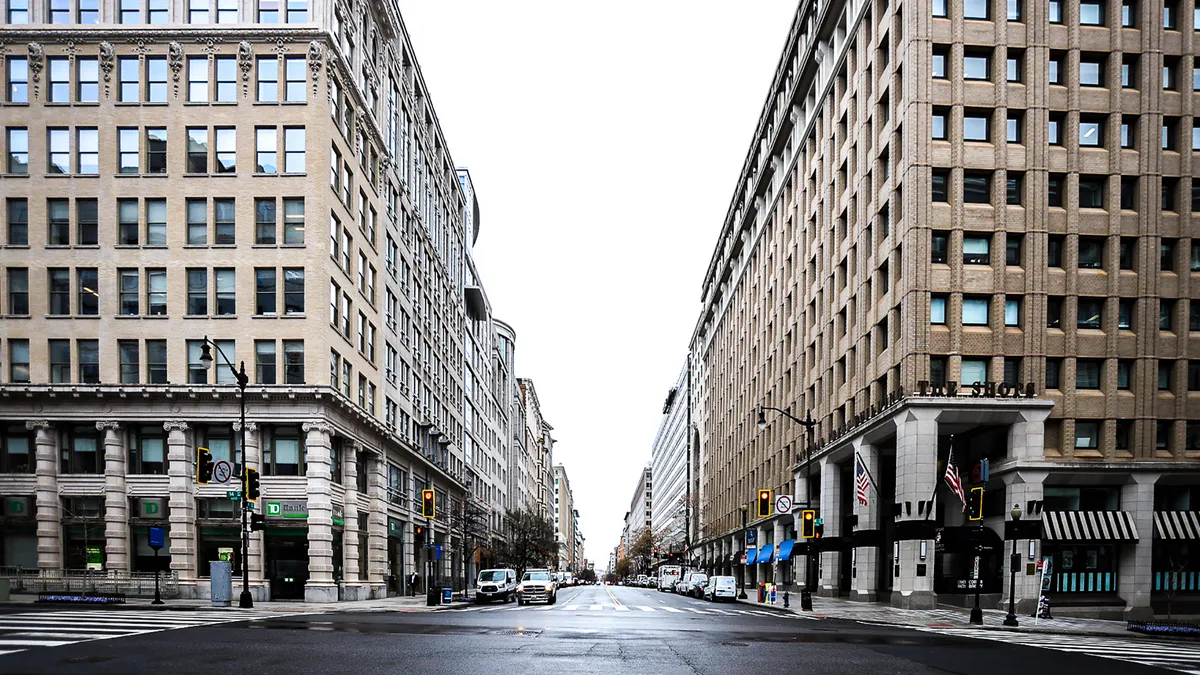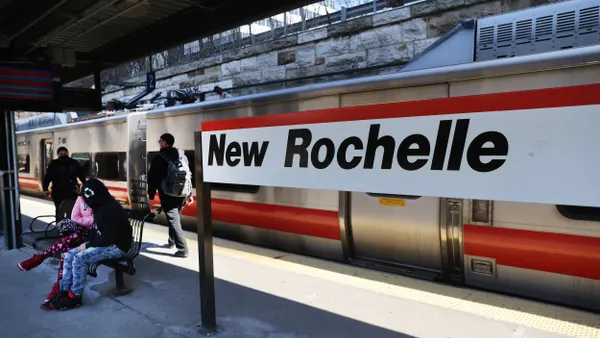Dive Brief:
- District of Columbia Mayor Muriel Bowser is aiming to add more than 100,000 new residents to the city’s downtown, including 15,000 over the next five years, by converting office space into residential housing.
- Bowser announced the city’s new goal after being sworn in for her third term as mayor on Monday. Downtown Washington, D.C., has not fully recovered since the start of the pandemic due to the switch to remote or hybrid work.
- “We must and we will win back our downtown because it is the economic engine that allows us to invest in our schools, our safety net and our public works,” said Bowser. “Converting office space into housing is the key to unlocking the potential of a reimagined, more vibrant downtown.”
Dive Insight:
D.C. joins a growing number of U.S. cities, including San Francisco, Denver, Boston and Minneapolis, looking to revitalize downtowns that have experienced losses in foot traffic due to businesses allowing employees to work remotely or in hybrid arrangements.
Momentum has also grown around converting office space and hotels into new housing, to both restore vibrancy and speed the production of housing to address the affordable housing crisis. At the start of her second term, Bowser set a goal of adding 36,000 housing units throughout the city by 2025, 12,000 of which are affordable, to try to alleviate the high cost of housing. Between January 2019 and October 2022, D.C. produced over 25,000 net new units, more than 6,000 of which are affordable, according to city estimates.
Downtown D.C. has 25,000 residents, said Bowser. The mayor’s new goal would increase the number of residents in that part of the city by nearly 67% within the next five years and almost 600% when “it's all said and done.” However, she didn’t provide a time frame for when the city would achieve that top-line goal.
Bowser said the district needs help from the Biden administration to achieve that goal, however, because the federal government provided one-quarter of D.C.’s pre-pandemic jobs and owns or leases one-third of the city’s office space. The federal government needs to realign its property holdings for use by the local government, nonprofits, businesses or others willing to utilize those spaces, Bowser said.











